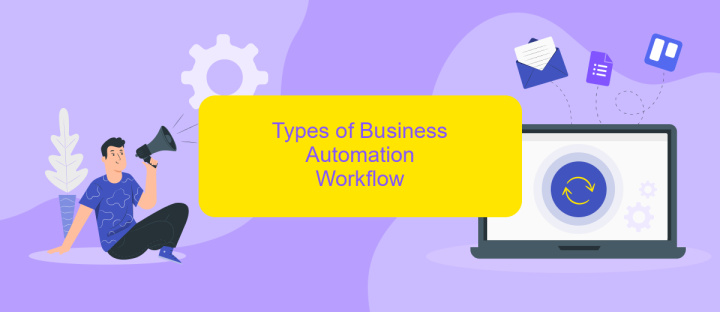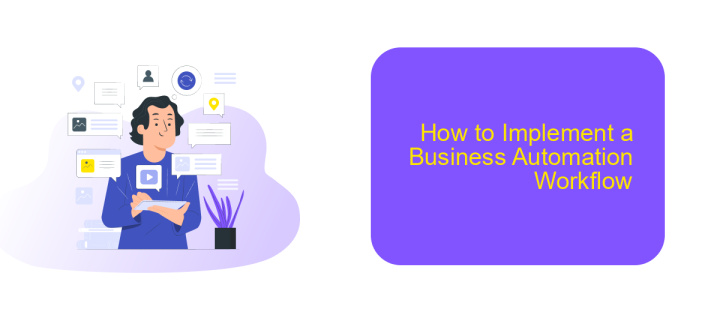What is Business Automation Workflow
Business Automation Workflow (BAW) is a comprehensive solution designed to streamline and optimize business processes through automation. By integrating tasks, data, and human interactions, BAW enhances efficiency, reduces operational costs, and improves overall productivity. In this article, we will explore the core components, benefits, and practical applications of Business Automation Workflow, providing insights into how it can transform your organization's operations.
What is Business Automation Workflow?
Business Automation Workflow (BAW) is a comprehensive solution designed to streamline and optimize business processes through automation. It integrates various tasks, data, and human interactions into a cohesive workflow, enhancing efficiency and reducing manual efforts.
- Automates repetitive tasks
- Enhances collaboration among team members
- Reduces errors and improves accuracy
- Provides real-time monitoring and analytics
- Integrates with existing systems and tools
By leveraging platforms like ApiX-Drive, businesses can further enhance their automation workflows. ApiX-Drive facilitates seamless integration with various services, enabling data synchronization and automated task execution across different applications. This not only simplifies the setup process but also ensures that all systems work in harmony, ultimately driving productivity and operational efficiency.
Benefits of Business Automation Workflow

Implementing Business Automation Workflow (BAW) significantly enhances operational efficiency by streamlining complex business processes. By automating repetitive tasks, organizations can reduce human error, save time, and allow employees to focus on more strategic activities. This leads to increased productivity and faster turnaround times, ultimately improving customer satisfaction and business outcomes.
Moreover, BAW provides better visibility and control over workflows, enabling businesses to monitor progress in real-time and make data-driven decisions. Integration with tools like ApiX-Drive further amplifies these benefits by allowing seamless connectivity between various applications and services. This ensures that data flows smoothly across the organization, facilitating better collaboration and more informed decision-making. Overall, the adoption of Business Automation Workflow not only optimizes operations but also drives innovation and growth.
Types of Business Automation Workflow

Business automation workflows streamline operations by automating repetitive tasks and processes. There are several types of workflows that businesses can implement to improve efficiency and reduce manual effort.
- Approval Workflows: Automate the process of getting approvals for documents, budgets, and other requests, ensuring a smooth and timely approval process.
- Task Management Workflows: Assign, track, and manage tasks within a team, ensuring that all tasks are completed on time and according to priority.
- Integration Workflows: Connect different software and platforms to automate data transfer and synchronization. Tools like ApiX-Drive facilitate seamless integrations between various apps, reducing manual data entry and errors.
- Customer Support Workflows: Automate customer service processes, such as ticketing, follow-ups, and feedback collection, to enhance customer satisfaction and response times.
- Marketing Automation Workflows: Automate marketing tasks such as email campaigns, social media posting, and lead nurturing to streamline marketing efforts and improve ROI.
By implementing these types of business automation workflows, organizations can enhance productivity, improve accuracy, and free up valuable time for employees to focus on more strategic tasks. Integrating tools like ApiX-Drive can further optimize these workflows by enabling seamless connectivity between different systems and applications.
How to Implement a Business Automation Workflow

Implementing a Business Automation Workflow (BAW) involves several critical steps to ensure seamless integration and efficiency. The first step is to identify the processes that need automation. This involves analyzing current workflows to pinpoint areas that can benefit from automation, such as repetitive tasks and data entry.
Once the processes are identified, the next step is to design the workflow. This includes mapping out each step of the process and determining how data will flow from one step to the next. Utilizing tools like flowchart software can be helpful in visualizing the workflow.
- Identify processes for automation
- Design the workflow
- Select the appropriate automation tools
- Test and refine the workflow
After designing the workflow, it's crucial to select the right automation tools. Services like ApiX-Drive can facilitate the integration of various applications, ensuring data flows smoothly between them. Finally, testing the workflow is essential to identify any issues and make necessary adjustments. Continuous monitoring and refinement will help in maintaining an efficient BAW system.
Best Practices for Business Automation Workflow
Implementing Business Automation Workflow effectively requires meticulous planning and execution. Start by identifying repetitive tasks and processes that can be automated to save time and reduce errors. Ensure that your team is well-trained in using the automation tools and understands the workflow thoroughly. Regularly review and update the automated processes to adapt to changing business needs and technologies. Establish clear goals and metrics to measure the success of your automation initiatives.
Leverage integration services like ApiX-Drive to connect various applications and streamline data flow across your business operations. This not only enhances efficiency but also ensures that all your systems are synchronized and up-to-date. Test the integrations thoroughly before deployment to avoid any disruptions. Additionally, maintain a feedback loop with your team to continuously improve the automation workflow based on their experiences and insights. By following these best practices, you can maximize the benefits of Business Automation Workflow and drive your business towards greater productivity and innovation.


FAQ
What is Business Automation Workflow?
How can Business Automation Workflow benefit my organization?
What types of processes can be automated using Business Automation Workflow?
How do I integrate Business Automation Workflow with my existing systems?
Is Business Automation Workflow suitable for small businesses?
Apix-Drive is a universal tool that will quickly streamline any workflow, freeing you from routine and possible financial losses. Try ApiX-Drive in action and see how useful it is for you personally. In the meantime, when you are setting up connections between systems, think about where you are investing your free time, because now you will have much more of it.

